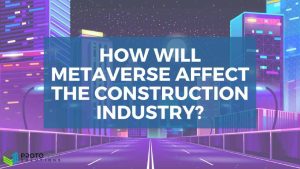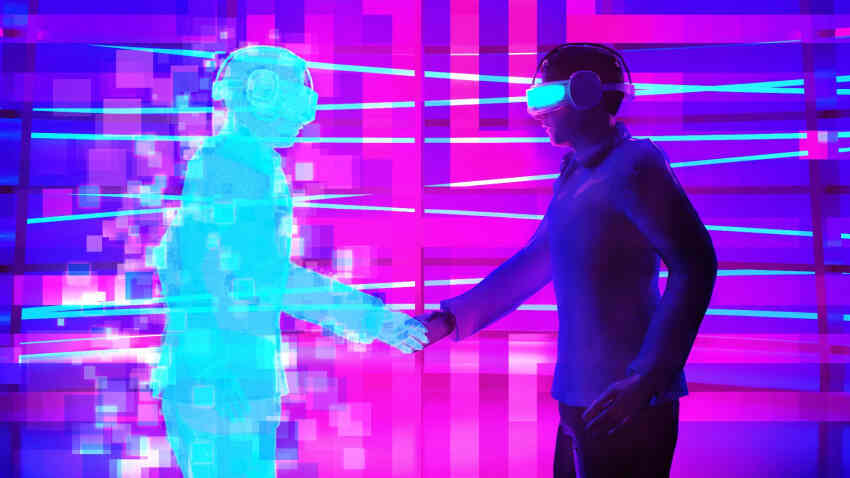What Is the Metaverse and How Will It Affect the Construction Industry?
What Is the Metaverse and How Will It Affect the Construction Industry?
 BIM object modelling
BIM object modelling
Basic requirement for BIM object
BIM designer
 Fig : How will Metaverse Affect the Construction Industry?
Fig : How will Metaverse Affect the Construction Industry?
How your AEC firm communicates ideas has altered because of the metaverse
The “metaverse” is a new phrase coined by Meta (the new corporate name includes Facebook and Messenger). The Metaverse is a 3D progression of the internet, a virtual realm that can be experienced accurately.
Meta’s new identity reflects a significant shift in how we connect. The metaverse has substantial consequences for communicating and working together in the Architecture, Engineering, and Construction (AEC) industries.
AEC and VDC teams must embrace metaverse work to keep up with shifting client expectations, a changing talent pool, and tough competition.
This post will show how your company can benefit from the metaverse and avoid being left behind.
“The internet” vs. “the metaverse”: what’s the distinction?
“It’s the difference between peering through a window and being there right in the moment together.” – said Mark Zuckerberg.
While the internet is brutal to describe, we have mostly consumed it in 2D. Phones, tablets, computers, and TVs were the first wave of “connected devices” that brought us together online.
Virtual and augmented reality headsets, glasses, and other “connected gadgets” are becoming more multi-sensory as we move towards the next generation. These products emphasize 3D immersion, a sensation of physical presence, and interaction with the actual environment.
 Fig : The metaverse
Fig : The metaverse
The metaverse transforms online content into 3D immersive worlds that may be shared and interacted with by multiple people (often taking physical form as avatars.) Read more about XR here.
Your AEC/VDC teams can become superheroes thanks to the metaverse.
It’s a new headquarters with “superpowers” for every employee, and it’s global. These superpowers include instant 3D massing, asset manipulation, virtual clipboard interaction with building layers and BIM data. 3D models, chats, media, data visualization, project management, and web apps are all brought into a shared physical space that our hands can interact with.
Numerous metaverse platforms, such as ProtoTech, connect our work to these shared experiences. Each platform is specialised in a distinct area, such as immersive prototyping and design reviews in ProtoTech versus 3D issue tracking and BIM collaboration in Prospect.
These tools help us better understand the spaces we create and communicate about them. With 3D environments, we can eliminate the need for in-person design review meetings and business travel while speeding up approvals and reducing design-to-construction delays.
Metaverse for Revit, BIM360, and more
All of your normal work tools are available in the metaverse with a few clicks. Collaboration solutions such as ProtoTech integrate directly with tools such as Navisworks to create shared workspaces that can be accessed from anywhere.
Also, technologies like Autodesk Construction Cloud ensure that your work is always up to current, whether on a PC or VR. Immersive experiences will constantly be updated with Autodesk tools.
Working in the metaverse for AEC has many advantages.
Here are a few examples of how VR and AR have revolutionized our industry’s workflows:
REMOTE COLLABORATION
VR allows AEC teams and clients to collaborate from anywhere, reducing meetings, travel, and approval times.
PROTOTYPING
Your hands can quickly iterate from site planning to architectural variations, saving materials and time.
BIM COMMUNITY
In addition to realistic issue tracking, VR allows for BIM/VDC inspection and layer visibility options.
FINISHING
AR allows you to evaluate every option in real-time, enabling co-creation and shorter design cycles, whether analyzing site facades or modifying materials for customers.
PRESENTATIONS
It helps you create multi-sensory presentations that appeal to all learning styles, gain new clients, and speed up project approval.
Learn more about these workflows and how your AEC team can use VR and AR to implement them in the metaverse.
FAQ
Who owns the Metaverse?
Despite their name, Meta does not own the metaverse. However, they do build technology that connects us to it. The metaverse is owned by everyone who uses it, including 3D artists, game developers, immersive collaboration platforms, and even VR headset owners.
Isn’t this mainly for gamers?
Sure, gaming is a vast entertainment industry that has historically fueled investments in immersive technology like VR. Beyond recreation, the metaverse may connect people to sociability, work, art, fitness, spirituality, etc.
Is the metaverse the internet?
Yes. The internet is a crucial infrastructure for connecting ideas. The metaverse uses the internet to integrate ideas into shared experiences. Your body is the primary device that connects your thoughts to physical reality, with VR headsets connecting to metaverse realities.
What’s the difference between XR and the metaverse?
Extended Reality (XR) is a broad word that encompasses Virtual Reality (total immersion), Augmented Reality (forced immersion in the real world), and Mixed Reality (a combination of the two.) These XR forms exist in the Metaverse, which connects all-immersive realities.
Is the real world in the metaverse?
Yes
VR and AR to implement
metaverse for AEC
BIM coordination
Real-time AR / VR visualization
virtual reality software for architecture
Contact us:
info@prototechsolutions.com
ProtoTech Solutions and Services Pvt. Ltd.


9 Responses to What Is the Metaverse and How Will It Affect the Construction Industry?